Any time you make a purchase online, request a new password, or create an account, you get an email about it, usually within seconds. These are transactional emails, and they’re essential to running an online business.
In this article, I’ll cover the definition of transactional emails and explain how they differ from marketing emails. I’ll share examples of how and when to send transactional emails and list some the best transactional email services.
- What Is Transactional Email?
- Transactional Emails Vs. Marketing Emails: What’s the Difference
- Transactional Email Examples: 4 Common Use Cases
- How to Send Transactional Emails: Use a Transactional Email Platform
What Is Transactional Email?
A transactional email is a type of automated email triggered by a website user’s specific action. That action is usually related to a purchase, registration, or other account activity on a website or app, and the emails are usually sent in real-time. Common transactional emails include:
- Order confirmations
- Shipping updates
- Password resets
- New device login notifications
- Notices about expiring subscriptions
- Account creation confirmation
- Invoices or receipts
- Payment failure notifications
Transactional emails are a vital aspect of eCommerce. Customers expect to get immediate notifications for these important transactions, and these notifications create a seamless user experience (UX) and help build trust in your brand.
For example, here’s a transactional email I received recently. It’s an order confirmation from the Art Institute of Chicago:
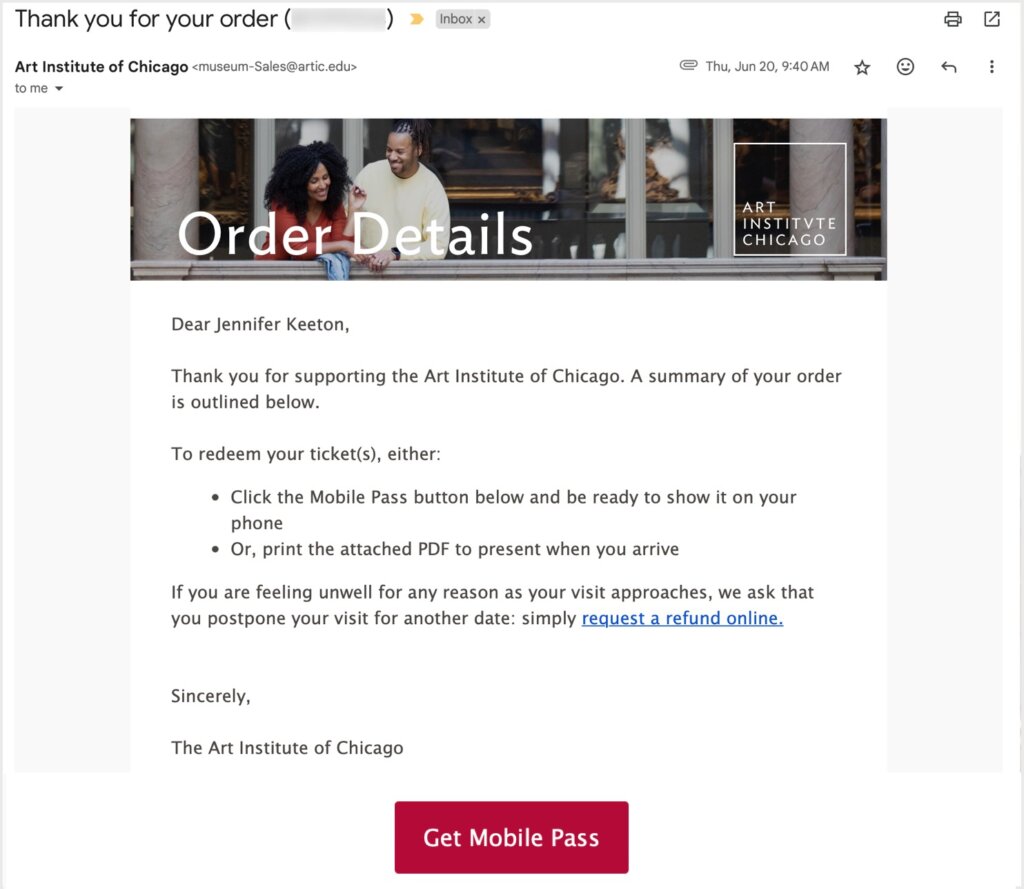
The email also included a receipt of my payment and a PDF attachment of my tickets. I received this email within seconds of purchasing admission tickets on their website. The email let me know that my purchase had gone through, and it also included everything I needed to visit the museum. With this one transactional email, the Art Insitute created an easy experience for me as a first-time customer.
Transactional Emails vs. Marketing Emails: What’s the Difference?
Your inbox likely contains plenty of transactional emails like the one above. However, the same brands probably send you even more marketing emails. So what’s the difference between transactional and marketing emails? The difference lies in how they’re sent and their primary goal.
How Transactional Vs. Marketing Emails Are Sent
The first difference between transactional and marketing emails is how they’re sent.
Transactional emails, by definition, are triggered by a user’s action or by activity on their account. Once the emails and triggers are set up, the messages are sent automatically. They’re sent one at a time, and they’re personalized to each user based on their account information. For instance, they often contain the details of a recent purchase, shipment tracking codes, or order numbers.
Marketing emails, on the other hand, are scheduled by the company’s marketing team. They’re usually sent in bulk, either to entire subscriber lists or to specific email segments. Marketing emails contain messages intended for a large number people, as opposed to sending specific information to individuals.
The Primary Goals of Transactional vs. Marketing Emails
Transactional emails are information-driven. Their primary goal is to improve UX by quickly delivering important information to users.
Marketing emails, on the other hand, are promotion-driven. Their primary goal is to get recipients to take an action, such as buying a product, visiting a blog post, or registering for an event. Marketing emails almost always contain at least one clickable call-to-action (CTA).
However, you may notice that I used the term “primary goal” rather “only goal.” That’s because both marketing and transactional emails can have multiple objectives. In fact, it’s a good idea to include a promotional CTA at the bottom of some transactional emails.
Important Note: Different countries have different rules about what can be included in transactional emails. For example, the UK has much stricter email laws than the U.S. Make sure you research your country’s laws before adding any marketing to your transactional emails. This discussion on email legality is a helpful starting point.
To illustrate this point, I’ll share examples of 2 different emails I recently received from the skincare brand Remedy.
First, here’s a marketing email I got from Remedy:
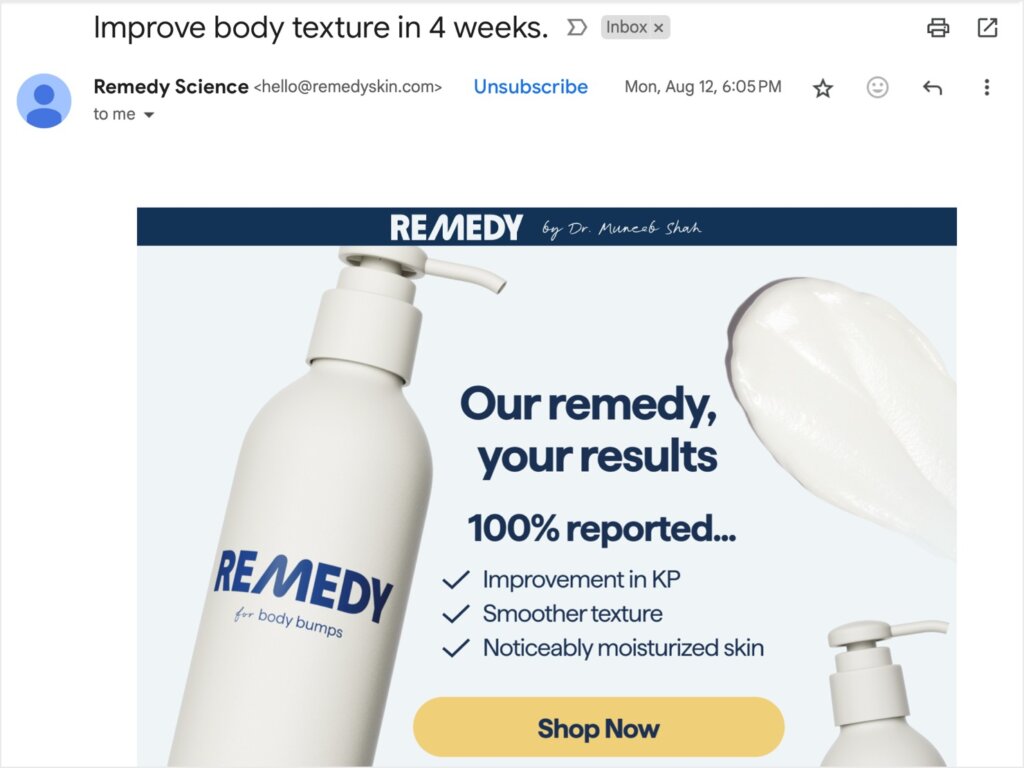
The goal of this email is clear: To encourage me to click that “Shop Now” button to buy one of their products.
Second, here’s a transactional email that also came from Remedy:
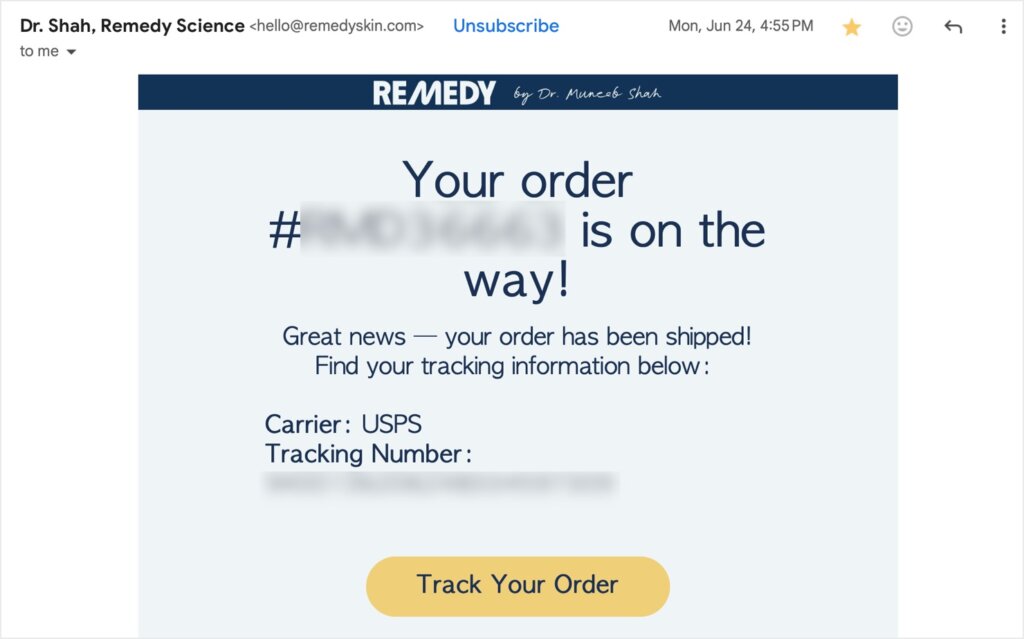
The primary goal of this email was to let me know that my order had shipped and to provide a tracking number.
However, when I scrolled down, the email also contained promotional messaging and links:
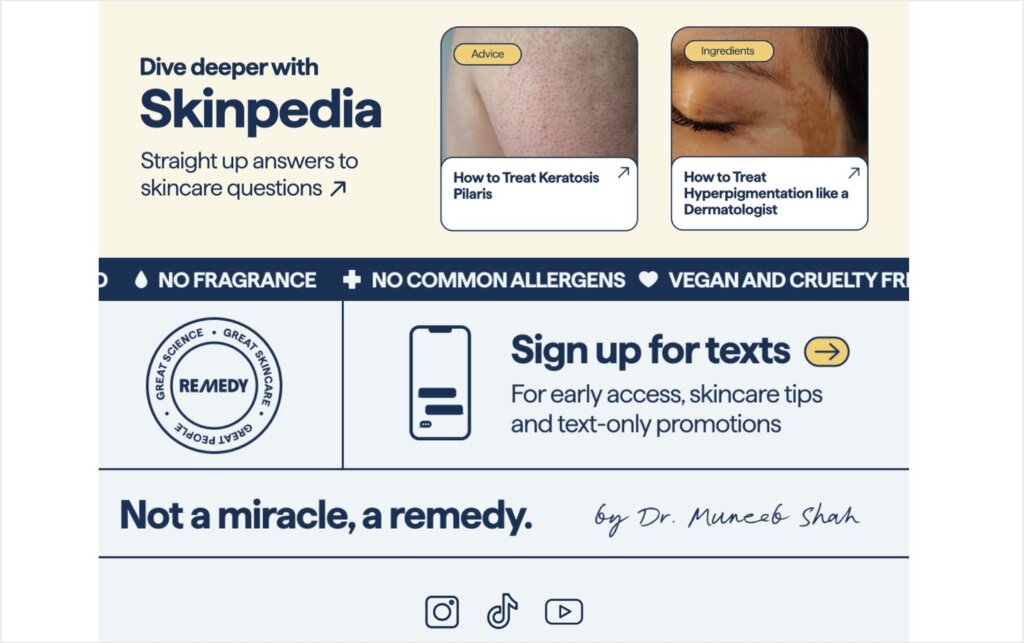
The second half of the email encourages customers to stay engaged with the brand by reading some of their blog posts. While the email’s main purpose is the shipping notification, Remedy used the opportunity to build brand loyalty and get customers to browse their site again. Remember, you can only add this sort of message if it’s legal in your country.
In short, transactional emails are focused on providing information and are triggered automatically by a user’s action. Marketing emails are primarily promotional and are sent in bulk to encourage subscribers to take a specific action.
Transactional Email Examples: 4 Common Use Cases
1. Account Confirmation Email From HubSpot
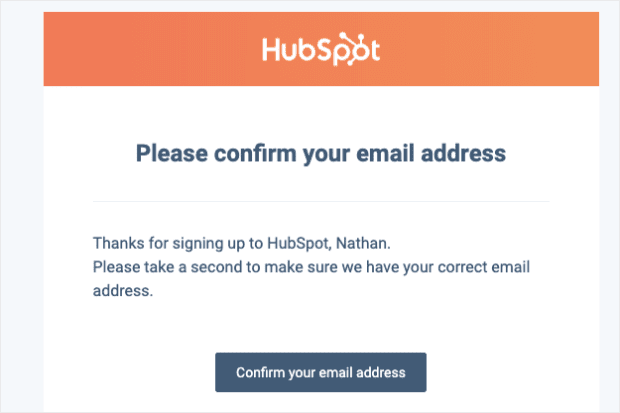
Let’s start with the basics. This is the transactional email HubSpot uses when you sign up for their free account. It has a professional and simple design, isn’t distracting, and has one goal: to get you to confirm your email address and complete the sign-up process.
2. Password Reset Email From Slack

Slack’s transactional email, like HubSpot’s from the first example, is super simple and stripped down. This email is triggered when the user tries to reset their password. All you need to do is click Choose a new password.
3. Order Confirmation Email from Amazon
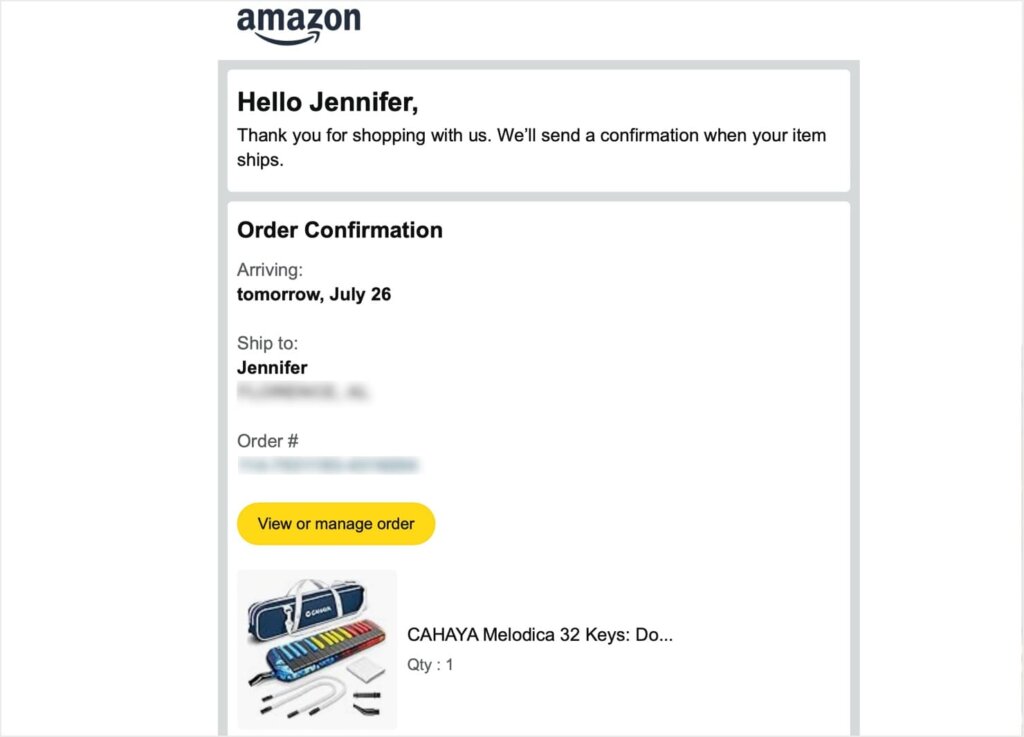
I got this order confirmation email from Amazon after I purchased a melodica for my nephew’s birthday. The email not only confirmed my purchase but also gave me an estimated day for my order to arrive.
Of course, Amazon never misses an opportunity to encourage you to shop more. The bottom of the email featured links to 2 products I had recently viewed on their site:

This Amazon order confirmation is a perfect example of how marketing messages can be included in transactional emails in the United States. Just make sure that promotional links are secondary to the email’s most important information.
4. New Device Login Notification From Etsy
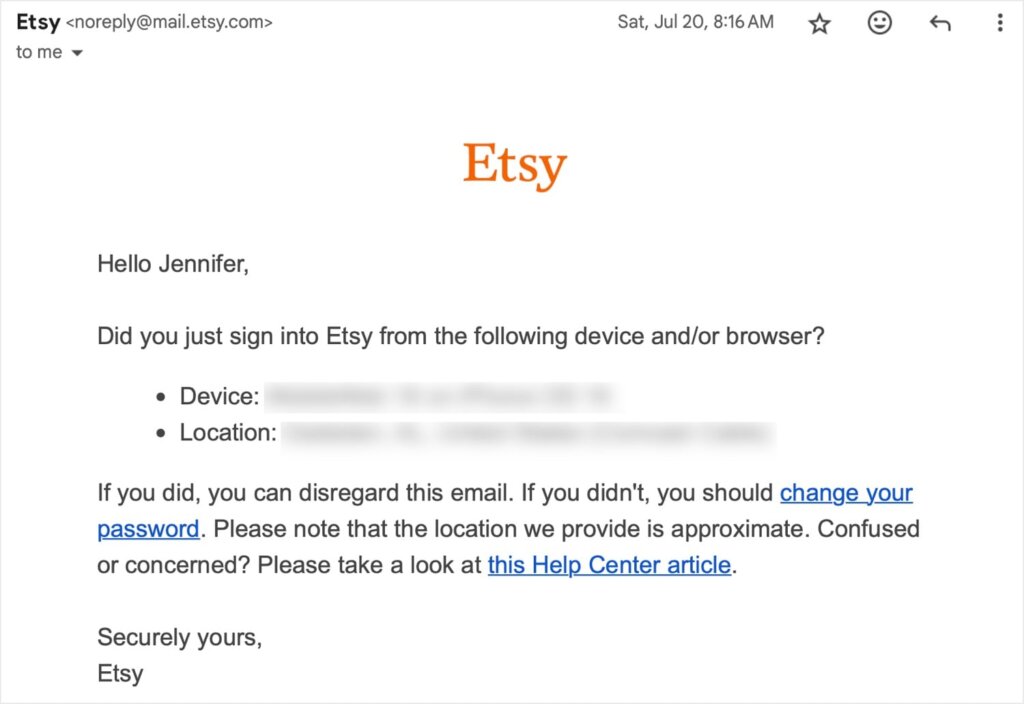
Here’s an example of a more advanced transactional email. This email was triggered when I signed in to my Etsy account from a new device. To keep my account protected, Etsy immediately notified me about the login, so I could change my password if necessary.
How to Send Transactional Emails: Use a Transactional Email Platform
It may sound complicated to set up all of these different emails to send out automatically. Thankfully, there are plenty of transactional email platforms to make the process simple.
For a full list of services, along with reviews of each one, check out this article:
9 Best SMTP Services for Reliable Transactional Emails
Here are 3 quick suggestions for transactional email services:
- SendLayer: My top recommendation if you want a dedicated service for your transactional emails.
- Brevo (formerly Sendinblue): The best choice for an email marketing platform that can also handle your transactional emails.
- WP Mail SMTP: If your site is built on WordPress, you’ll need an SMTP plugin so your transactional emails can work properly. This one will make sure all those important messages get delivered.
Grow Your Business Today!
Transactional emails are a required part of doing business online because they’re so pivotal to the customer experience. A few well-designed emails can keep your users informed throughout the customer journey.
Of course, one of the best ways to get users to make transactions in the first place is to send marketing emails. Here are some resources to help you succeed:
- Email Marketing: The Easiest Way to Grow Your Business
- How to Get More Email Subscribers (17 Proven Tips!)
- How to Create an Email Campaign (Step-by-Step Guide + Examples)
- Email Copywriting That Sells: 17 Genius Tips to Write Better Emails
If you want to build a better email list, OptinMonster is the very best way to do it. Learn how in this video:
Ready to get started? Sign up for OptinMonster with our 14-day money-back guarantee.


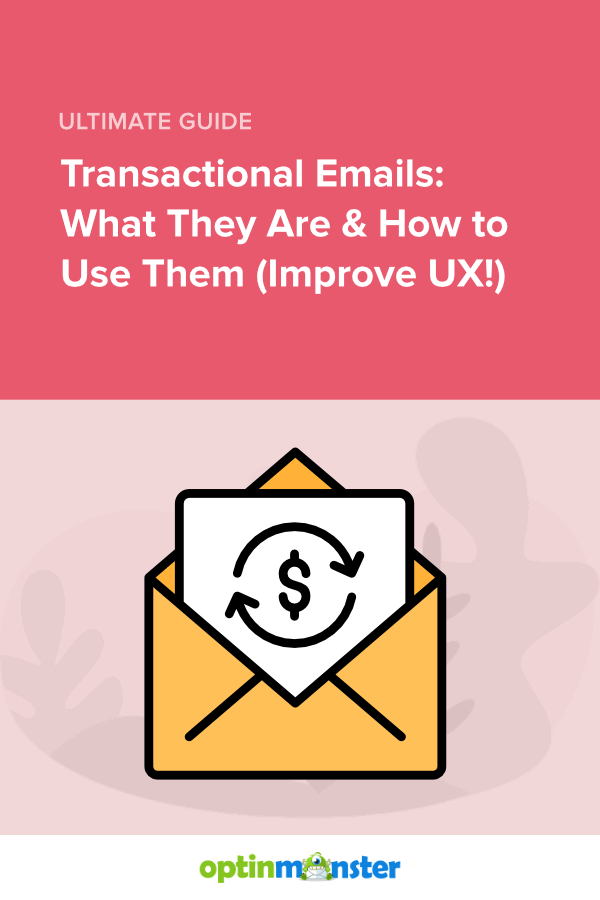









Add a Comment